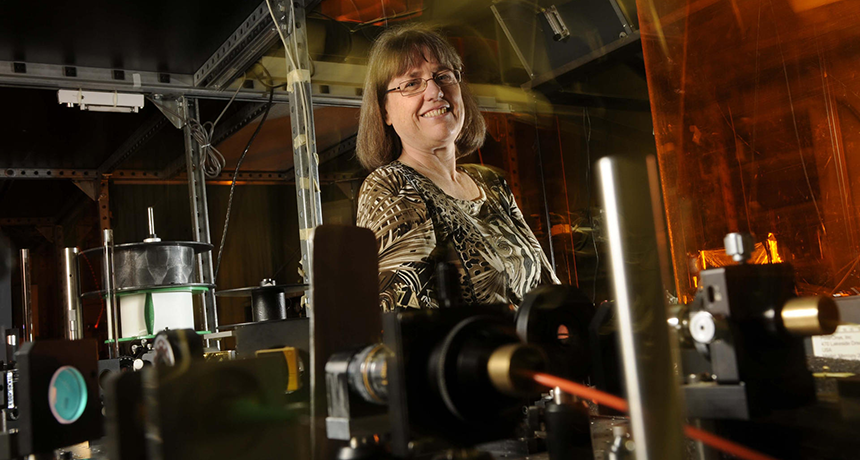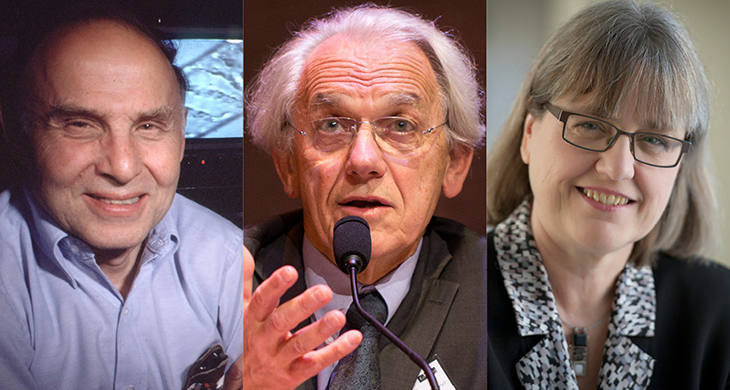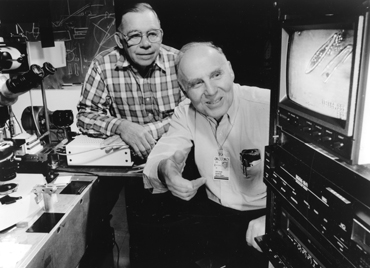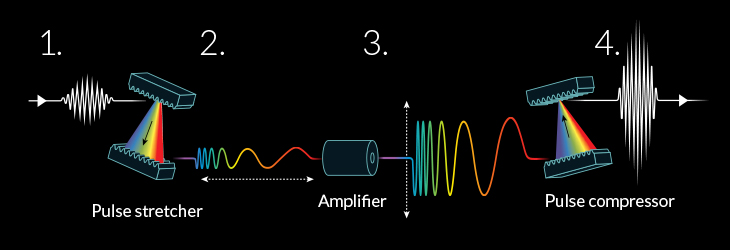Dazzling laser advances bring physicists a Nobel Prize
Work by the three made possible optical ‘tweezers’ and amazingly intense beams of light

Donna Strickland, seen here, is one of three scientists to win this year’s Nobel Prize in physics. Strickland also is only the third woman in history to win this physics award.
Peter Lee/Waterloo Region Record
By Emily Conover and Lisa Grossman
Two major discoveries in laser science have proven to be more than just tricks of light. They allow scientists to tackle a range of previously impossible tasks. And in appreciation for what these advances offer, three of their discoverers will take home the 2018 Nobel Prize in physics.
The trio will share 9 million Swedish kronors. That’s equal to a bit more than $1 million.
Half will go to Arthur Ashkin for his work on laser-based tractor beams. He pioneered their development while a physicist at Bell Laboratories in Holmdel, N.J. These beams are known as optical tweezers. They can manipulate small, fragile items — without hurting them. Such tiny tweezered objects can include viruses and bacteria.
The other half of the prize went to two physicists who created intense, short bursts of laser light. Gérard Mourou and Donna Strickland produced these powerful laser pulses. They used a process now known as “chirped pulse amplification.” Other researchers would ultimately harness the technique for such applications as laser eye surgery.
The award marks only the third time a woman has been awarded a physics Nobel. (Marie Curie was the first, in 1903, for her research to explain nuclear radiation. Sixty years later, Maria Goeppert Mayer won it. She made discoveries related to the structure of atomic nuclei.)

About those tweezers and bright, bright beams
Individual particles of light are called photons. Scientists had known that the pressure exerted by photons can push objects around. Ashkin’s work took advantage of that. By focusing a laser beam just so, he realized that other small objects could be trapped and moved around. Ashkin’s first paper on optical tweezers came out in 1986. Since then, the technique’s popularity has exploded.

Philip Jones is a physicist at University College London, in England. Ashkin’s Nobel was “a thoroughly well-deserved and long-overdue award,” he says. Today, Jones notes, hundreds of labs across the world — including his own — perform work that relies on optical tweezers.
Such systems find use in a broad range of applications. These include testing how DNA stretches and studying the forces exerted by individual cells. The laser systems also might be used to trigger chemical reactions between a single pair of atoms. Building on the idea of laser tweezing allowed scientists to trap and cool atoms. (That discovery led to its own Nobel 21 years ago.)
Gérard Mourou works at École Polytechnique in Palaiseau, France. Donna Strickland is at the University of Waterloo in Canada. In their own flourish of laser flare, these two wrangled light to open up new realms of technology and research. Their work was published in 1985. It showed scientists how to strengthen laser pulses beyond earlier limits. Instruments known as amplifiers can boost light pulses — but only to a point. Beyond that, the light would damage the amplifier. To get around that problem, Mourou and Strickland first stretched out their laser pulses. This lowered the light’s power to where it could be safely amplified. Afterward, they compressed the pulses back to their original size. Now those pulses reached higher-than-ever intensities.

Scientists now rely on this process to create the most powerful laser pulses on the planet. Some can pack millions of billions of watts of power! Such intense bursts of light are so rare in the universe that “when one of the modern lasers like this fires, god has to stop and think about what to do,” quips Paul Corkum. He’s a physicist in Canada at the University of Ottawa. But these lasers are not just for show. Their intense beams might one day be used to accelerate particles, trigger nuclear fusion or create matter from light.
Some scientists also build off of Mourou and Strickland’s technique to create amazingly short laser pulses. Each may last only attoseconds. That’s billionths of a billionth of a second. Such very short pulses can help create movies of very brief processes. For instance, they can reveal the mysterious physics of the electrons zipping around an atom.
Mourou and Strickland’s work “has really impacted the extremes to which humans can reach,” says Corkum. But laser pulses based on this technique also find use in more ordinary pursuits. For instance, they are the basis of laser eye surgery. They are also used to cut through materials — including the glass in some cell phones.
Women and the Nobels
It’s been 55 years since the last woman received a Nobel in physics. “It’s really terrific that barrier has finally been breached,” says Margaret Murnane. She’s a physicist at the JILA research center in Boulder, Colo. “It’s great that Donna is being recognized for her contribution to this very important laser-science advance.”
When told by a reporter at a press conference that she was only the third woman to have won the physics Nobel, Strickland replied, “Is that all? Really?” She said she is honored to be one of them.
The United Nations Educational, Scientific and Cultural Organization, or UNESCO, is based in Paris, France. “The acknowledgment of Donna Strickland’s accomplishments sends an important message of encouragement to girls and women to better commit themselves to the sciences,” says Audrey Azoulay. She is UNESCO’s Director-General. Fewer than three percent of scientists today are women. UNESCO hopes to see that change, and soon.
Göran Hansson is Secretary General of the Royal Swedish Academy of Sciences. The number of women even nominated for a Nobel is a “small percentage” of the total, he noted at a press conference earlier today. Indeed, he noted: “We are taking measures to encourage more nominations [of women] because we don’t want to miss anyone.”
Ashkin, Mourou and Strickland will receive a medal and their prize money at a December 10 awards ceremony in Stockholm, Sweden.







